The Skinny on Fats and Oils
INGREDIENTS
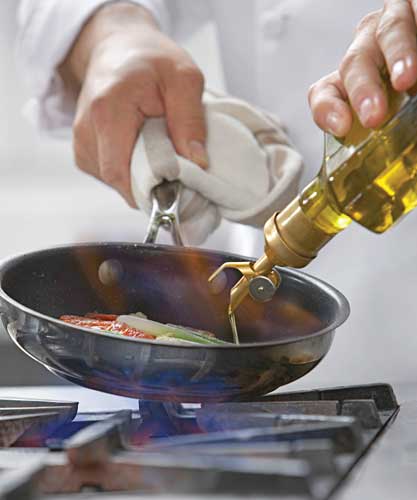 Few nutrients and ingredients have experienced as much scrutiny as fat. Consumers were told to eat less fat, especially saturated fat to reduce the risk of heart disease. This ushered in the era of low-fat and no-fat food products and partially hydrogenated oils being used to replace saturated fats in baked goods, deep-fried foods, and snack products. But now, partially hydrogenated oils—the main dietary source of processed trans fatty acids—are being phased out of many foods in favor of other fats that promise better nutrition for consumers and improved functionality for food processors. And yes, even saturated fat is coming back into favor with some; a June 2014 cover story from Time magazine titled “Ending the War on Fat” examines the history of how fat became public enemy No. 1 and explains how researchers have shown that some fats, in particular saturated fat, might not be the main contributor to our health problems. (However, the role of saturated fat in the diet continues to be debated; the 2015 Dietary Guidelines Advisory Committee suggests eating a diet low in saturated fat.)
Few nutrients and ingredients have experienced as much scrutiny as fat. Consumers were told to eat less fat, especially saturated fat to reduce the risk of heart disease. This ushered in the era of low-fat and no-fat food products and partially hydrogenated oils being used to replace saturated fats in baked goods, deep-fried foods, and snack products. But now, partially hydrogenated oils—the main dietary source of processed trans fatty acids—are being phased out of many foods in favor of other fats that promise better nutrition for consumers and improved functionality for food processors. And yes, even saturated fat is coming back into favor with some; a June 2014 cover story from Time magazine titled “Ending the War on Fat” examines the history of how fat became public enemy No. 1 and explains how researchers have shown that some fats, in particular saturated fat, might not be the main contributor to our health problems. (However, the role of saturated fat in the diet continues to be debated; the 2015 Dietary Guidelines Advisory Committee suggests eating a diet low in saturated fat.)
Fat is bad. Fat is good. What is a product developer to do? IFT Past President Roger Clemens discusses the top five reasons fat is needed in the diet in this video.
Luckily for these developers, ingredient manufacturers of fats and oils are using both plant breeding and laboratory techniques to create fats and oils that are more stable at high temperatures or have a healthier fatty acid profile. And this is important. Fats and oils play a role in cooking methods like frying where they are part of heat transfer, and they contribute to texture, in particular the flakiness of pie crust, the creaminess of cake frosting, and the crispness of fried chicken batter. The ingredients also affect flavor, acting as a flavor carrier and affecting flavor perception.
The landscape for fats and oils continues to change, meaning that new approaches and new developments in the ingredient category are evolving to meet the functional needs of product developers and the nutritional needs of consumers.
Industry Awaits Decision on PHOs
Nowhere is that landscape changing more than for product developers who use partially hydrogenated oils, especially if the U.S. Food and Drug Administration (FDA) makes its proposal to remove the self-determined Generally Regarded As Safe (GRAS) status of partially hydrogenated oils final. This means that partially hydrogenated oils would not be allowed in foods unless a manufacturer petitions the FDA for approval. “Everybody is going to be impacted by this one way or the other,” remarks Rick Cummisford, QA director at Columbus Vegetable Oils, Des Plaines, Ill. (columbusvegoils.com), a manufacturer of an extensive line of vegetable and tropical oils, shortenings, and animal fat ingredients. “There are food manufacturers that have thousands of products that contain partially hydrogenated oils.”
Cummisford, who spoke to industry professionals about the FDA proposal and what it means for product developers during a Chicago Section IFT technical meeting in October 2014, explained that the FDA has plenty of questions from food manufacturers to answer to set the record straight and give final guidance to how the food industry should proceed. Will the FDA include trans fats that are found naturally in some animal fats in addition to those produced in partially hydrogenated oils? How will it address hydrogenated versus partially hydrogenated oils? Is there a chance that partially hydrogenated oils used as raw materials to make other ingredients will not be allowed? Cummisford admits that there is a lot of confusion and that the industry will have to wait for the final decision from the FDA.
With no indication from the FDA as to when it will issue its decision on the proposal, which it announced in November 2013, the food industry is wasting no time in its reformulating efforts. “Anybody in the food industry knows that you don’t wait for the FDA to do something, you move forward,” says Cummisford. The concern over trans fat being linked to coronary heart disease and other health conditions is not new; researchers began investigating the links as far back as the 1980s. In 2003, the FDA announced that starting on January 1, 2006, trans fat would be labeled on nutrition labels. At the time of the announcement, food manufacturers began reformulation efforts to reduce or eliminate trans fats from their products. Cummisford notes that his company experienced a significant uptick in inquiries and business as a result of the 2003 FDA announcement and that the 2013 proposal has brought in even more food manufacturers concerned that they need to keep ahead of the pending FDA decision on partially hydrogenated oils.
Even at minimal levels, partially hydrogenated oils are still in many foods. But for how much longer? That is for the FDA to decide.
--- PAGE BREAK ---
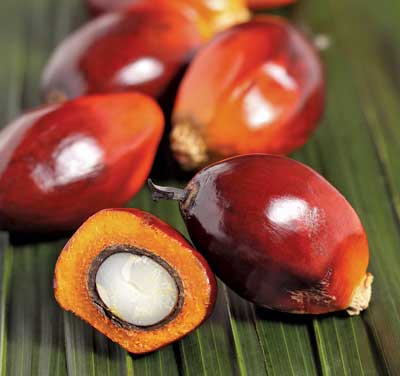 Positioning Palm Oil as Trans Fat Alternative
Positioning Palm Oil as Trans Fat Alternative
As the food industry awaits the FDA decision on partially hydrogenated oils, ingredient manufacturers are pointing out their trans-fat-free ingredient options and the functionalities that they can bring to food applications. As a fat ingredient that is naturally semi-solid at room temperature, palm oil is ideal for use in bakery, snack, and other applications that require semi-solid fats, says Shellie Kramer, marketing manager at IOI Loders Croklaan, Channahon, Ill. (croklaan.com). This quality of palm oil reduces the need for using processes like interesterification or full hydrogenation to make a liquid oil semi-solid at room temperature, she adds.
When trans fats were developed, they introduced new levels of functionality to bakery applications with improved textures, stability, and shelf life as well as a relatively low cost impact, according to Gerald McNeill, vice president of research and development, North America, at IOI Loders Croklaan. McNeill spoke at a Chicago Section IFT technical meeting in October 2014 about the functional benefits of trans fats to applications like bakery and snack foods, and how food manufacturers could integrate palm oil ingredients into food formulations to achieve the functions long provided by trans fats. “You have to have the right kind of crystal structure for the majority of baked goods and snack foods,” he says, and points out that palm oil produced through the fractionation process can match qualities of partially hydrogenated oils. Palm oil is about 50% saturated fat and 50% unsaturated fat, and these fat components can be separated from each other through a physical process called fractionation. The process involves melting palm oil to produce a suspension or slurry of high melting point crystals in a liquid oil, which is then put into a filter press to press out the liquid oil. The result is two oils with different physical properties. The process can be repeated to prepare about 10 different components called fractions, each having its own unique functionality. Fractions are blended together in different proportions along with liquid oils to produce more than 200 new ingredients like the ones IOI Loders Croklaan offers for shortenings, icings, fillings, oils, and coatings.
Mention palm oil and the topic of sustainability is sure to arise, especially given recent reports about how clearing land for palm oil plantations is affecting indigenous people and wildlife. Kramer emphasizes that IOI Loders Croklaan has had a policy in place and that it issued a new sustainable sourcing policy at the beginning of 2015 to provide more detail about what the company had been doing and commitments it is making to achieve greater sustainability in palm-growing regions. “The key points are that we are committed to no deforestation through the conservation of high carbon stock forest and the protection of peat areas,” says Kramer. “We are committed to building a traceable and transparent supply chain.” The company’s policy, which is available on its website, details the rights of the employees of the palm industry and the indigenous people in the plantation areas “to make sure that we are driving economic benefits for their region and the communities.” Dedication to important issues like this is imperative to the success of ingredients manufacturers, given that some consumers are pushing food product developers to use ingredients that are sourced as sustainably as possible. Kramer says that she has no doubt food manufacturers know that palm oil is a well-suited alternative to partially hydrogenated oils, but they also have to feel confident that they can choose the company’s palm oil ingredients for their sustainability and traceability.
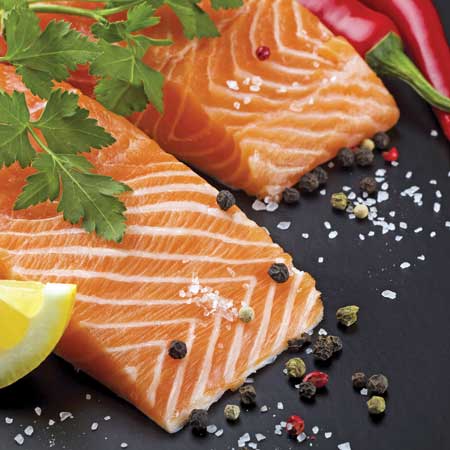 Stabilizing Omega-3s for Food Products
Stabilizing Omega-3s for Food Products
Researchers continue to focus on the health benefits of the essential fatty acid, omega-3. Some research on specific health benefits of omega-3 fatty acids is inconclusive. However, the American Heart Association points out that there is plenty of research that shows that consuming omega-3s is beneficial in terms of heart health. Other studies point to omega-3s affecting inflammation, brain health, and conditions like rheumatoid arthritis and irritable bowel syndrome.
Our bodies cannot make omega-3 fatty acid, so we must get it from food. Alpha-linolenic acid (ALA), one type of omega-3, comes from walnuts, certain vegetable oils like soybean, flaxseed, and canola, and some green vegetables like kale, spinach, and brussels sprouts. Our bodies convert some of the ALA we consume into the other types of omega-3s called eicosapentaenoic acid (EPA) and docosahexaenoic acid (DHA). Fish is the main source of a mixture of EPA and DHA, and these omega-3 fatty acids are used by the food industry to fortify everything from bakery to beverages. Formulating with omega-3s from fish oil does pose some problems though. Fish oil is prone to oxidation and can impart a fishy odor and taste to foods and beverages. Emulsion and microencapsulation technologies are used to help stabilize the omega-3s to make them easier to incorporate into foods and beverages without affecting taste, odor, and other sensory attributes. Nutegrity, Irvine, Calif. (nutegrity.com), recently partnered with Oceans Omega, Montvale, N.J. (oceansomega.com), to offer omega-3 EPA/DHA ingredients under its ΩmegaActiv line that utilize Oceans Omega’s water-soluble emulsions. The patented technology developed by Oceans Omega helps form a purified translucent emulsion ingredient called OTEC 250CL-K that is said to deliver shelf-stable omega-3s that have neutral taste and are practically odorless.
Fish is not the only marine source of omega-3s; algae are a source of DHA used in life’sDHA from DSM Nutritional Products, Heerlen, the Netherlands (dsm.com). Oceans Omega has developed another emulsion ingredient called OTEC 300LDHA-S35 to help deliver stable DHA in life’sDHA. The ΩmegaActiv from Nutegrity and life’sDHA from DSM, both of which utilize emulsion technology, are designed for use in beverage applications.
New IngreVita Oil Offers Non-GMO Option
Cargill, Minneapolis, Minn. (cargill.com), offers its own omega-3-based ingredient—a high oleic sunflower oil blended with fish oil and a proprietary mix of antioxidants. IngreVita High Oleic Sunflower and EPA/DHA Omega-3 Oil (IngreVita HO Sun) debuted in March 2015, and it is produced from identity-preserved conventionally bred (non-GMO) high oleic sunflower seeds. The sunflower is not genetically modified, so why is Cargill promoting the IngreVita sunflower oil as non-GMO? “Not all of our customers are as intimately knowledgeable of oil seeds,” explains Kristine Sanschagrin, marketing manager, specialty seeds & oils, at Cargill. “By calling this out, we are able to communicate clearly to all customers.” She adds that a number of the company’s customers who had sampled IngreVita Canola Oil, a blend of high oleic canola oil, fish oil, and antioxidants that was released in 2014, asked for a similar oil that could be labeled as GMO-free. “Our new sunflower-based IngreVia provides this option for them.”
Sunflower oil is typically used in cooking applications as well as in dressing and sauces, has a light taste, and can be easily blended with other oils. It is also high in monounsaturated fat. The addition of fish oil that provides long-chain omega-3 fatty acids (EPA and DHA) to the sunflower oil allows food manufacturers to formulate products that can help consumers incorporate more omega-3s into their diets.
The antioxidants help prevent the fishy taste and odor from coming out into the foods and beverages as well as improve the shelf life. An unopened container of IngreVita HO Sun has a shelf life of nine months. “We have reached over 13 months of shelf life in long shelf-life products,” says Sanschagrin. Both IngreVia oils are available in the United States, Asia, South America, and Europe.
--- PAGE BREAK ---
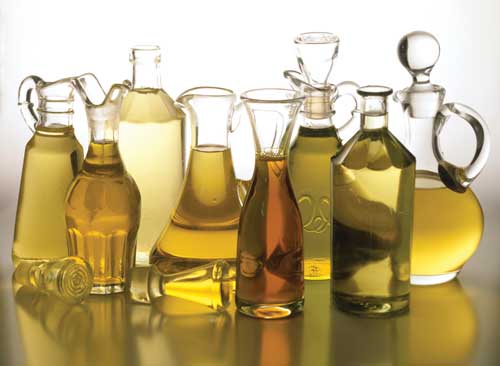 A Focus on Canola Oil’s Functions
A Focus on Canola Oil’s Functions
Product developers and foodservice operators looking for a versatile oil with a neutral taste that can stand alone or be easily blended with other oils have several options, including canola oil. Not only does canola oil offer these benefits, it also can tolerate heat extremely well (its smoke point is 468°F, with high oleic canola oil having a smoke point of 475°F), making it ideal for commercial applications, says Shaunda Durance-Tod, program manager for CanolaInfo at the Canola Council of Canada, Winnipeg, Canada (canolainfo.org).
Durance-Tod’s work at CanolaInfo also includes promoting the nutritional aspects of canola oil, calling canola oil “one of the healthiest culinary oils in the world” by pointing out that it has the least amount of saturated fat and the most plant-based omega-3 fat of all common cooking oils. “The U.S. Food and Drug Administration authorized a qualified health claim on canola oil’s ability to reduce the risk of heart disease when used in place of saturated fat,” she explains. “Additional heart health and other benefits about canola oil are well-documented, including in a scientific literature review published in the peer-reviewed journal Nutrition Reviews in June 2013 that examined studies conducted in the last 25 years.”
Some companies are developing canola to produce different types of omega-3 fatty acids such as EPA and DHA, she says. “Existing canola oil is already high in plant-based omega-3 fat (ALA), but new canola oils with omega-3 fats typically derived from marine sources will offer additional health benefits.”
Rainforest Plant Yields High Omega-3 Oil
Ingredient manufacturers often look to alternate sources to use when creating ingredients for foods and beverages. Health benefits, cost, and compliance with new regulations are some of the reasons that these manufacturers undertake such efforts. They may use technologies to develop entirely new ingredients or enhance qualities of ones already available, or they may turn their attention to sources that have ties to cultures that date back centuries. This is the case with the sacha inchi plant, a vine native to the Amazon Rainforest region of Peru that has been used by indigenous people for at least 3,000 years.
Today, manufacturers cold press the star-shaped seeds, which contain omega-3, omega-6, and omega-9 fatty acids, to extract an oil that can be used in bar, dressing, and sauce applications. The oil typically has an omega-3 (alpha-linolenic acid) content of close to 50%. The Scoular Company, Minneapolis, Minn. (scoular.com/food), offers sacha inchi oil with 45% omega-3, 32% omega-6, and 9% omega-9 and a mild, nutty flavor.
Biotechnology Improves Traits of Soybean
Biotechnology, particularly genetic modification technology, is hotly debated, with some people against using any type of biotechnology in agriculture. But as Richard Galloway, president of Galloway and Associates and a consultant of Qualisoy and the United Soybean Board, explains, biotechnology used to develop high oleic soybean oil offers a number of benefits. “Soybean varieties developed through biotechnology can add value for the consumer, such as a higher proportion of fats that support heart, brain, and immune health. It also contributes many improved functionality traits that directly benefit the food industry. For farmers, biotechnology offers improved agronomic traits that increase productivity and allow for more sustainable farming practices.” Watch a video featuring experts from Bunge and DuPont Pioneer sharing insights into fat and oil ingredients.
From a product development standpoint, tests have shown that high oleic soybean oil performs well under high-heat applications compared to other commodity oils, with Qualisoy pointing out that the resistance to oxidation and reduced buildup of polymers on equipment are attractive qualities of the oil to foodservice operators and food manufacturers. The higher levels of monounsaturated fats in high oleic soybean oil are key to the oil being less sensitive to oxidation and the resulting off-flavors and rancidity that develop, thereby increasing its shelf life, adds Galloway. Monounsaturated fats may also benefit heart health when consumed in moderation and may help reduce LDL cholesterol levels in the blood.
--- PAGE BREAK ---
The soybean plant develops the fatty acids that make up the oil fraction of the soybean in sequence, with saturated fatty acids developing first, followed by monounsaturated fatty acids and then polyunsaturated, says Galloway. The monounsaturated fats, made up primarily of oleic fatty acid, are much more resistant to oxidation than polyunsaturated fatty acids. “The techniques employed by both DuPont Pioneer and Monsanto stop the genetic progression of fatty acid development, so that a concentration of oleic fatty acid is developed and far less polyunsaturated fatty acids are developed,” he adds.
As far as the supply of high oleic soybean oil, which was commercialized in 2011, is concerned, Qualisoy, Chesterfield, Mo. (qualisoy.com), estimates that about 400 million pounds of the oil will be available in 2017 and 9.3 billion pounds in 2024. Working on behalf of more than half a million soybean farmers in the United States, the United Soybean Board, Chesterfield, Mo. (unitedsoybean.org), invested $60 million to expand the seed development of high oleic soybeans. “This investment is used to ensure that the seed varieties are competitive with other soybean seeds in the market,” explains Galloway. “It’s also used to educate farmers, build enthusiasm for high oleic soybeans and promote high oleic soybean oil to the food industry. Once final regulatory approval is achieved in the EU (and a minor regulatory step is completed in China, in the case of Monsanto), DuPont Pioneer and Monsanto are poised to expand high oleic seed development and work with processors to refine the oil. These final approvals are expected this year.”
DuPont Pioneer, Johnston, Iowa (www.plenish.com), currently offers Plenish high oleic soybean oil.
Microalgae Yield Functional Fat
Using a strain of microalgae that was discovered in the sap of a chestnut tree in Germany, Solazyme, San Francisco, Calif. (algavia.com), developed AlgaVia High Stability Algae Oil and AlgaVia Ultra Omega-9 Algae Oil. Specifically, the company enhances the microalgae’s natural oil-producing ability by inserting genes from oil-producing plants to help the microalgae convert plant sugars into oil. “For example, when developing a heart-healthy oil, we might add a sunflower gene that increases production of monounsaturated fats, while shutting off a gene in the algae that encourages production of saturated fat,” explains Mark Brooks, senior vice president and general manager of food ingredients at Solazyme. “We are increasing health and nutrition benefits in food ingredients by identifying the best traits in oil-producing plants and incorporating them back into algae.” He adds that the microalgae are fed simple sugars like corn or sugar cane and then ferment in steel tanks to produce golden-colored oil-rich cells. The next step in the process involves pressing the microalgae cells, similar to how some vegetable oils are produced, to release the oil that, according to Brooks, does not contain any genetically modified organisms. The company recycles the algae cells.
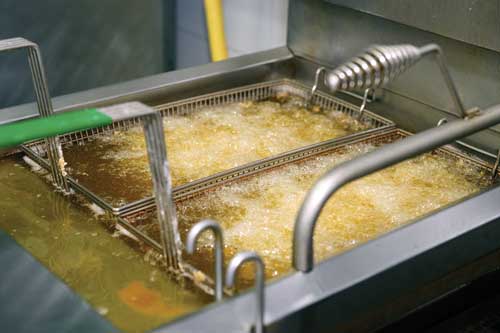 The two AlgaVia algae oils each have specific applications in which they work optimally. With a high level of oxidative stability and a long shelf life, AlgaVia High Stability Algae Oil is well suited for use in frying applications and can replace or reduce saturated fats and trans fats (the oil has 0g of trans fat) in dressings, potato chips, French fries, and mayonnaise. Brooks also points out that since the oil has a neutral taste, it can function as a flavor carrier or protector in sensitive applications or be blended with other oils. As its name suggests, the AlgaVia Ultra Omega-9 Algae Oil is a rich source of monounsaturated omega-9 fat, giving manufacturers an ingredient alternative to reduce or replace saturated fats in packaged foods “with heart-healthy monounsaturated fats,” says Brooks. “A unique quality to this oil is its high smoke point of 485°F, surpassing levels for olive oil, butter, canola oil, palm oil, and soybean oil and given its completely neutral taste, it allows you to taste the food you’re eating, rather than mask it with another flavor.”
The two AlgaVia algae oils each have specific applications in which they work optimally. With a high level of oxidative stability and a long shelf life, AlgaVia High Stability Algae Oil is well suited for use in frying applications and can replace or reduce saturated fats and trans fats (the oil has 0g of trans fat) in dressings, potato chips, French fries, and mayonnaise. Brooks also points out that since the oil has a neutral taste, it can function as a flavor carrier or protector in sensitive applications or be blended with other oils. As its name suggests, the AlgaVia Ultra Omega-9 Algae Oil is a rich source of monounsaturated omega-9 fat, giving manufacturers an ingredient alternative to reduce or replace saturated fats in packaged foods “with heart-healthy monounsaturated fats,” says Brooks. “A unique quality to this oil is its high smoke point of 485°F, surpassing levels for olive oil, butter, canola oil, palm oil, and soybean oil and given its completely neutral taste, it allows you to taste the food you’re eating, rather than mask it with another flavor.”
Algae oils are not the only microalgae-based lipid ingredient that Solazyme offers; its AlgaVia Whole Algal Flour is a trans-fat-free, cholesterol-free, and monounsaturated fat-rich ingredient that can reduce or replace dairy fats, egg yolks, and oil. “It is unique to other lipid replacers because of its smooth, creamy texture and neutral flavor,” states Brooks. The ingredient helps reduce calories and saturated fat as well. An example of this that Brooks highlights is a challah bread product concept where the AlgaVia Whole Algal Flour replaced all of the egg and some of the oil to reduce the total fat by 60%, reduce calories by 20%, and reduce saturated fat and cholesterol by 100%.
Low-Saturate Shortening Solutions
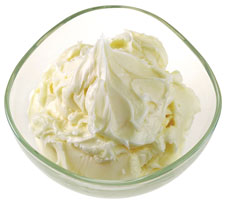 Using oilseeds like soybeans, canola seeds, rapeseeds, and sunflower seeds and various processing technologies like enzymatic interesterification, Bunge North America, St. Louis, Mo. (bungenorthamerica.com), develops oils, margarines, and shortenings with lower levels of saturated fat and no trans fats. Bunge uses a patented technology and method to rearrange fatty acids on the glycerol backbone to produce plastic fats lower in saturated fats and with structure and functionality at room temperature. Powdered cellulose added to the fat helps hold liquid oil to provide additional strength to the crystal network. The company’s method, which it calls saturate sparing technology, produces UltraBlends Designer Solutions 148 All Purpose Shortening, UltraBlends Designer Solutions 172 All Purpose Bakery Shortening, and UltraBlends Designer Solutions 358 Emulsified Bakery Shortening. The shortenings are no trans fat and low saturates options that have greater levels of monounsaturated and polyunsaturated fats compared to traditional shortening, according to the company. Other methods that the company has developed include RighT Technology, which reduces the sum of trans fats and saturates by more than 30% in soybean oil and cottonseed oil, and NH Technology, which uses palm and/or palm kernel to develop zero trans fat shortenings that allow manufacturers to remove the word hydrogenation from labels of finished products.
Using oilseeds like soybeans, canola seeds, rapeseeds, and sunflower seeds and various processing technologies like enzymatic interesterification, Bunge North America, St. Louis, Mo. (bungenorthamerica.com), develops oils, margarines, and shortenings with lower levels of saturated fat and no trans fats. Bunge uses a patented technology and method to rearrange fatty acids on the glycerol backbone to produce plastic fats lower in saturated fats and with structure and functionality at room temperature. Powdered cellulose added to the fat helps hold liquid oil to provide additional strength to the crystal network. The company’s method, which it calls saturate sparing technology, produces UltraBlends Designer Solutions 148 All Purpose Shortening, UltraBlends Designer Solutions 172 All Purpose Bakery Shortening, and UltraBlends Designer Solutions 358 Emulsified Bakery Shortening. The shortenings are no trans fat and low saturates options that have greater levels of monounsaturated and polyunsaturated fats compared to traditional shortening, according to the company. Other methods that the company has developed include RighT Technology, which reduces the sum of trans fats and saturates by more than 30% in soybean oil and cottonseed oil, and NH Technology, which uses palm and/or palm kernel to develop zero trans fat shortenings that allow manufacturers to remove the word hydrogenation from labels of finished products.
Other Bunge oils, spreads, and shortenings are formulated to help provide enhanced nutritional and functional benefits to consumers around the world. Currently, the company continues to develop techniques to optimize the amounts of omega-3 and omega-6 fatty acids and monounsaturated and polyunsaturated fats in its oilseed ingredients and to provide alternatives to trans fats. It also uses plant sterols, fiber, and other ingredients to develop functional food products. In recent years, the company has produced Floriol Iod Protect, an iodine-enhanced sunflower oil to help prevent iodine deficiency in Romania, and Delicia Light, a margarine formulated without partially hydrogenated oil and sold in Brazil. Some of the other products in the company’s portfolio are Phytobake, a baking shortening sold in North America that does not contain partially hydrogenated oil and uses phytosterols to replace shortening saturates, and Douweijia Smart Quality Blended Oil, a blend of soybean and sunflower oils enhanced with DHA to help people in China increase their intake of this omega-3 fatty acid.
Next month’s Ingredients section will provide a preview of some of the ingredient suppliers exhibiting at IFT15 in Chicago, July 11–14.
--- PAGE BREAK ---
Ingredient Roundup
Looking for trans fat alternatives or oils with greater stability? Consider the following options for improvements and enhancements for your product development efforts.
• AAK, Malmö, Sweden (aak.com), specializes in manufacturing and supplying specialty vegetable fats to the chocolate and confectionery industry. Some of these ingredients include cocoa butter alternatives and filling fats with added functionality. Shea, illipe, palm oil, and more are used as raw materials to create the ingredients.
• The Non GMO Project in February 2015 verified a line of soy ingredients from CHS, St. Paul, Minn. (chsinc.com), as non-GMO. Two oil ingredients, CHS soybean salad oil and CHS crude soybean oil, are included.
• Dow AgroSciences, Indianapolis, Ind. (dowagro.com, omega-9oils.com), offers Omega-9 Canola Oil and Omega-9 Sunflower Oil, which are high in monounsaturated fat and low in polyunsaturated fat, resulting in an oil that has less polymerization when used in frying applications.
• Functional Product Trading S.A., Santiago, Chile (benexia.com), announced at the 2014 HiE event that Benexia Chia Oil was designated by the EU as a novel food used in plant fats and oils (maximum 10%) and food supplements (2 g/day).
• North Prairie Family Farms, Saskatoon, Saskatchewan, Canada (northprairiefamilyfarms.com), grows canola used in North Prairie Gold Canadian Canola Oil, a product of Virtex Farm Foods, Saskatoon (virtexfoods.com). The temperature used in the cold press process does not exceed 50°F, which helps to preserve the amber color and slight nutty flavor of the oil. The company debuted the oil at the 2015 Natural Products West/Engredea show.
• Food product developers and foodservice operators looking to reduce the levels of saturated fat while increasing the levels of monounsaturated and polyunsaturated fats can turn to canola oil. Richardson Oilseed, Winnipeg, Manitoba, Canada (richardson.ca), processes and supplies canola oil and canola/vegetable oil blends in straight oil ingredients, sprays, margarines, and shortenings. The company also offers an expeller pressed canola oil that is cold pressed from traditionally bred seed and a high oleic, low linolenic specialty canola oil that performs like liquid shortening in the deep fryer and is promoted as a nonhydrogenated alternative to traditional fats.
• Stratas Foods, Memphis, Tenn. (stratasfoods.com), recently introduced Sustain oil. It is formulated from a blend of mid-oleic and high-oleic sunflower oil that offers manufacturers an oil option that is zero trans fat, has a long fry life, offers easy fryer cleanup due to little to no polymerization and minimal gumming, and has a light taste, according to the company.
www.ift.org
Members Only: Read more about fats and oils online at ift.org. Type the keywords into the search box at the upper right side of the home page.
 Karen Nachay,
Karen Nachay,
Senior Associate Editor
[email protected]
